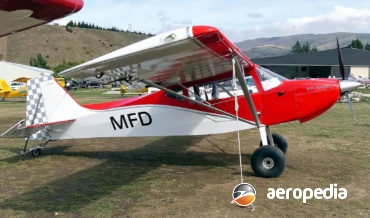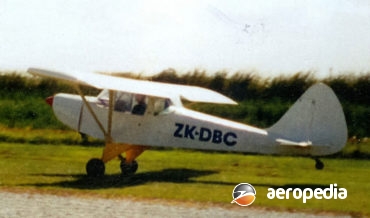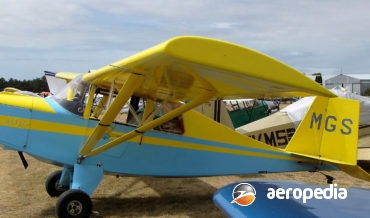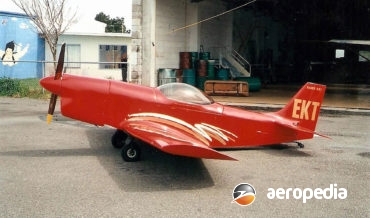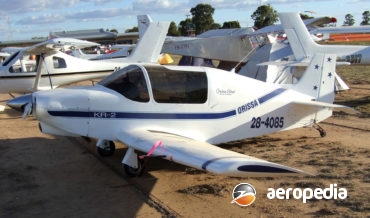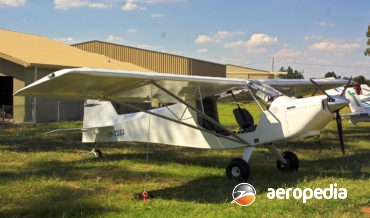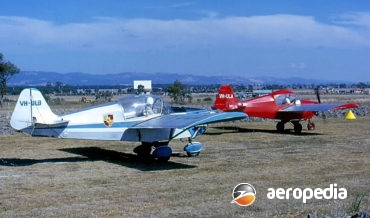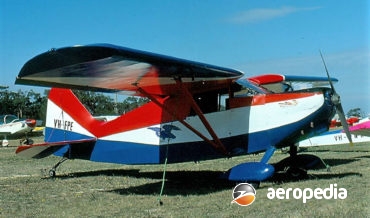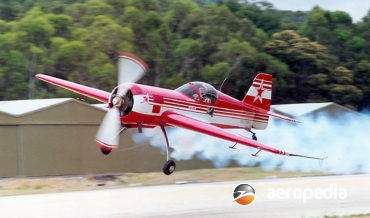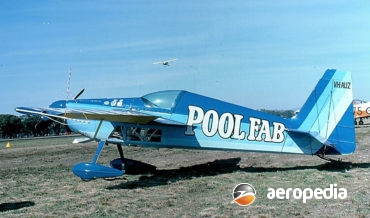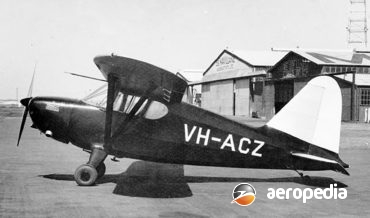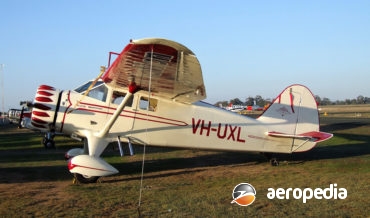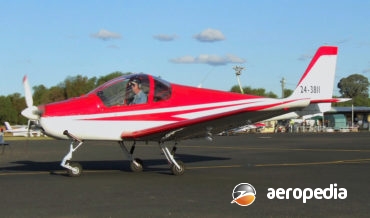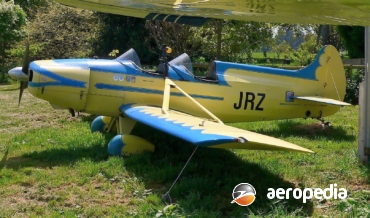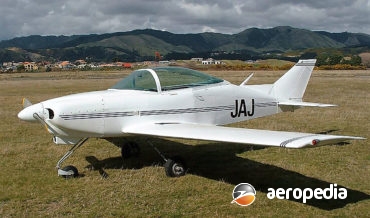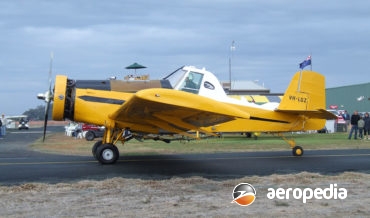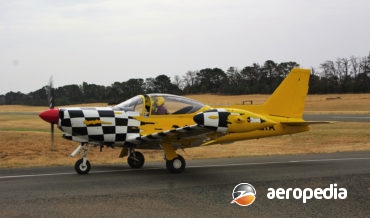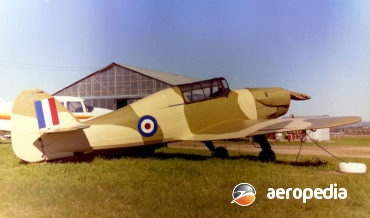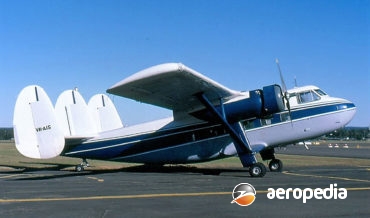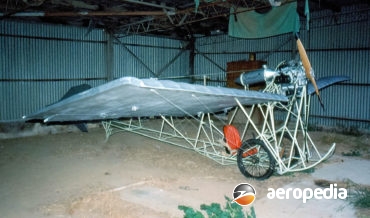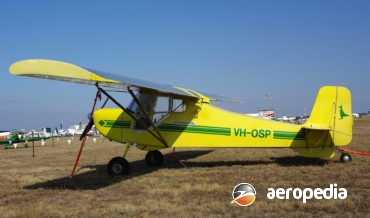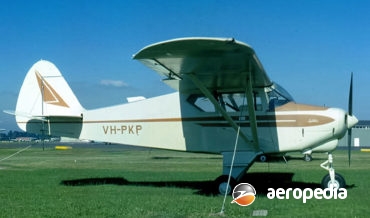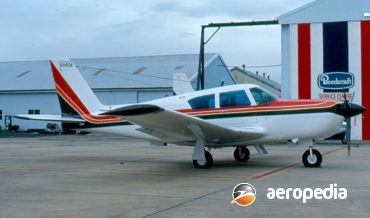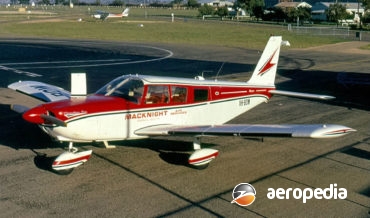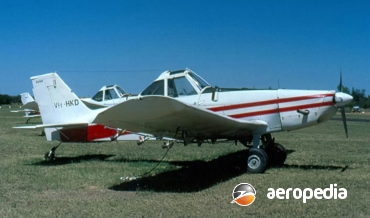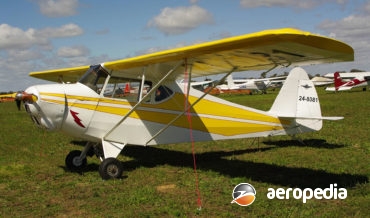All Contents
Contents
Unveiled at the EAA event at Oshkosh in Wisconsin in July 2013, the S-20 Raven was the latest of a long line of light aircraft developed by Rans, this model being a development of the S-6S Coyote and designed to replace that model on the market.
David C. Eyre
- May 8, 2019
The PT-2 is one of a series of light aircraft produced by Rag Wing Plans Service of Craytonville Airfield, Honea Path, South Carolina, aimed at the ultra-light market.
David C. Eyre
- May 8, 2019
The Ragabond is a scale single-seat replica of the popular Piper Vagabond produced in the 1950s and is produced by RagWing Plans Service of Craytonville Airfield, South Carolina.
David C. Eyre
- May 8, 2019
The Cheetah, produced in South Africa by Rainbow Aircraft at Springs Airfield, Springs, is a two-seat light sporting monoplane of robust construction.
David C. Eyre
- May 8, 2019
Rand Robinson Engineering Inc of Huntington Beach, California, was formed in the United States in 1974 to market plans for the KR-1 single-seat, and KR-2 two-seat series of amateur constructed aircraft.
David C. Eyre
- May 8, 2019
Rand Robinson Engineering Inc of Huntington Beach, California, was formed in the United States in 1974 to market plans for the KR-1 single-seat, and KR-2 two-seat series of amateur constructed aircraft.
David C. Eyre
- May 8, 2019
One of the new series of light aircraft produced by Rans Inc at Hays in Kansas in kit form for amateur builders.
David C. Eyre
- May 8, 2019
The Courier is marketed by Rans Inc of Hays, Kansas, and was introduced to the company’s range in 1985.
David C. Eyre
- May 8, 2019
Designed by Edward J Swearingen of San Antonio, Texas, the SX-300, when it was released, was described as the ultimate kit-built aircraft, being the fastest, the most expensive and the most complex to build.
David C. Eyre
- May 8, 2019
In 1931 Richard Sutton, a member of the Queensland Aero Club, indicated an interest in building an aircraft of his own design.
David C. Eyre
- May 8, 2019
The Stits SA-5A of early 1955 was the first of the Flut-R-Bug series, this being a single-engine single-seat sporting aircraft designed around a converted Volkswagen four-cylinder powerplant.
David C. Eyre
- May 8, 2019
The first aircraft in the Skycoupe series, the SA-7, was not originally planned for production, but interest in the aircraft forced the designer, Ray Stits, to revise his plans.
David C. Eyre
- May 8, 2019
In the early 1980s a programme was commenced in Moscow to develop a high performance aerobatic aircraft for competition.
David C. Eyre
- May 8, 2019
The Akro was designed by Mr C L Stephens in the USA specifically for amateur constructors who wished to take part in competitive aerobatics.
David C. Eyre
- May 8, 2019
The Model 105, also known initially as the HW-75, was introduced to the range of aircraft produced by the Stinson Aircraft Division of the Aviation Manufacturing Corporation in April 1939.
David C. Eyre
- May 8, 2019
As well as developing the tri-motor Model A, Stinson Aircraft was also working in 1933 on the SR Reliant series of light passenger monoplanes.
David C. Eyre
- May 8, 2019
The Sabre is designed and built in the Slovenia by SOVA and is available as a factory built machine, and can be registered under ultralight rules or in the general aviation category.
David C. Eyre
- May 8, 2019
In 1957 Mr Tony Spezio commenced design of a two-seat light sporting aircraft that reminded him of some of the racing aircraft that were seen around the airshow circuit in the United States in the 1930s, particularly the Howard Ike.
David C. Eyre
- May 8, 2019
The Ultrabat was conceived by George Markey in Sydney, designed by Graham Swannell and built by Scott Winton and George Markey as a high performance sporting aircraft.
David C. Eyre
- May 8, 2019
The Panther was designed by Daniel Weseman of Florida, US, a pilot and machinist who was involved in making conversions of the General Motors Corvair six-cylinder engine for installation in light aircraft.
David C. Eyre
- May 8, 2019
The design of the Sidewinder was commenced in 1958 by Jerry Smyth of Huntington, Indiana, it being a two-seat side-by-side sporting monoplane.
David C. Eyre
- May 8, 2019
This series of agricultural aircraft has received a number of appellations over the years, being known as the Snow Commander, Ayres, Marsh, Thrush, Aero Commander Ag Commander and the Rockwell Thrush Commander.
David C. Eyre
- May 8, 2019
The TB-20 Trinidad was designed by Socata, a subsidiary of Aerospatiale, as a natural up-market development of the popular TB-10 Tobago but fitted with a retractable undercarriage, a 187-kw (250-hp) engine, and an increased fuel capacity.
David C. Eyre
- May 8, 2019
The T-67 Firefly series was a development by Slingsby Aviation of the Fournier RF-6B two-seat aerobatic club trainer designed in the early 1970s and built with a steel-tube fuselage with fabric covering, and a wood with fabric covered wing.
David C. Eyre
- May 8, 2019
Designed by Stelio Frati, and built by a company known as Aviamilano in Italy, the prototype of this high-performance cabin monoplane was flown for the first time on 15 July 1964.
David C. Eyre
- May 8, 2019
The HH-1 Hawker Hurricane was designed by Fred G Sindlinger in Washington as a ⅝-scale replica of the famous Battle of Britain fighter of World War II, being aimed at representing a scale version of the Hurricane IIc.
David C. Eyre
- May 8, 2019
For hundreds of years man has been interested in flight, and many have been interested in man-powered flight.
David C. Eyre
- May 8, 2019
The Twin Pioneer was a twin-engine, light, general purpose transport monoplane designed for both civil and military applications, although the majority of those built were operated by the Royal Air Force and the Malayan Air Force.
David C. Eyre
- May 8, 2019
Built by Svenska Aeroplane AB at Linkoping in Sweden, the Safir was an all-metal training monoplane produced for the Swedish Airforce.
David C. Eyre
- May 8, 2019
Alberto Santos-Dumont (1873-1932) was a wealthy Brazilian living in Paris, France and he played an important part in promoting the design and construction of airships for some years from 1898, and was one of the first ‘Aeronauts’ to build and fly an airship in controlled and sustained flight.
David C. Eyre
- May 8, 2019
The Venture, and its co-produced Spirit, are light sporting aircraft produced in kit form by Questair Inc, which was formed by Edward MacDonough in the United States, the Venture being designed by James Griswold, an engineer with Piper Aircraft
David C. Eyre
- May 8, 2019
The Sassy is marketed by Protech Aircraft Inc in Houston, Texas, and is a simple-to-build two-seat side-by-side amateur built aircraft with STOL performance.
David C. Eyre
- May 8, 2019
The PZL-102 Kos (Blackbird) was designed and developed by Polskie Zakladey Lotnicze (PZL), the prototype powered by a 48-kw (65-hp) Narkiewicz four-cylinder horizontally-opposed air-cooled engine flying for the first time on 21 May 1958.
David C. Eyre
- May 8, 2019
The Piper Aircraft Corp in 1947 re-organised its operating procedures and worked towards introducing a new model, the two-seat side-by-side PA-15 Vagabond powered by a 48-kw (65-hp) Lycoming O-145 engine.
David C. Eyre
- May 8, 2019
The Piper Colt was designed by the Piper Aircraft Corporation as a cheap ‘everymans aeroplane’ to sell in the United States for below $5,000 in the early 1960s.
David C. Eyre
- May 8, 2019
Following the success of the earlier models of the Comanche, Piper moved on to build what it described in advertising as the ultimate light aircraft: ..this new Piper Comanche 400 is a pretty meaningful airplane
David C. Eyre
- May 8, 2019
In 1968 the Cherokee C variant joined the Cherokee range. Similar to the previous 150 and 160 models, this version added two more aircraft to the series: the PA-28-180 with a 134-kw (180-hp) Lycoming O-360-A3A engine, and the PA-28-235 with a 175-kw (235-hp) Lycoming O-540-B4B5 six-cylinder engine.
David C. Eyre
- May 8, 2019
The Cherokee Six series of aircraft emanated from the PA-28 Cherokee series, which was first released in the early 1960s.
David C. Eyre
- May 8, 2019
The PA-36 series of agricultural monoplanes appeared in 1971.
David C. Eyre
- May 8, 2019
In 1939 Porterfield Aircraft Corp in Kansas City introduced a new range of light two-seat in tandem cabin monoplanes which were a development of the earlier Model 35 series.
David C. Eyre
- May 8, 2019
Recent Comments
Archives
Categories
- No categories
Categories
- No categories
Latest Posts
Newsletter

